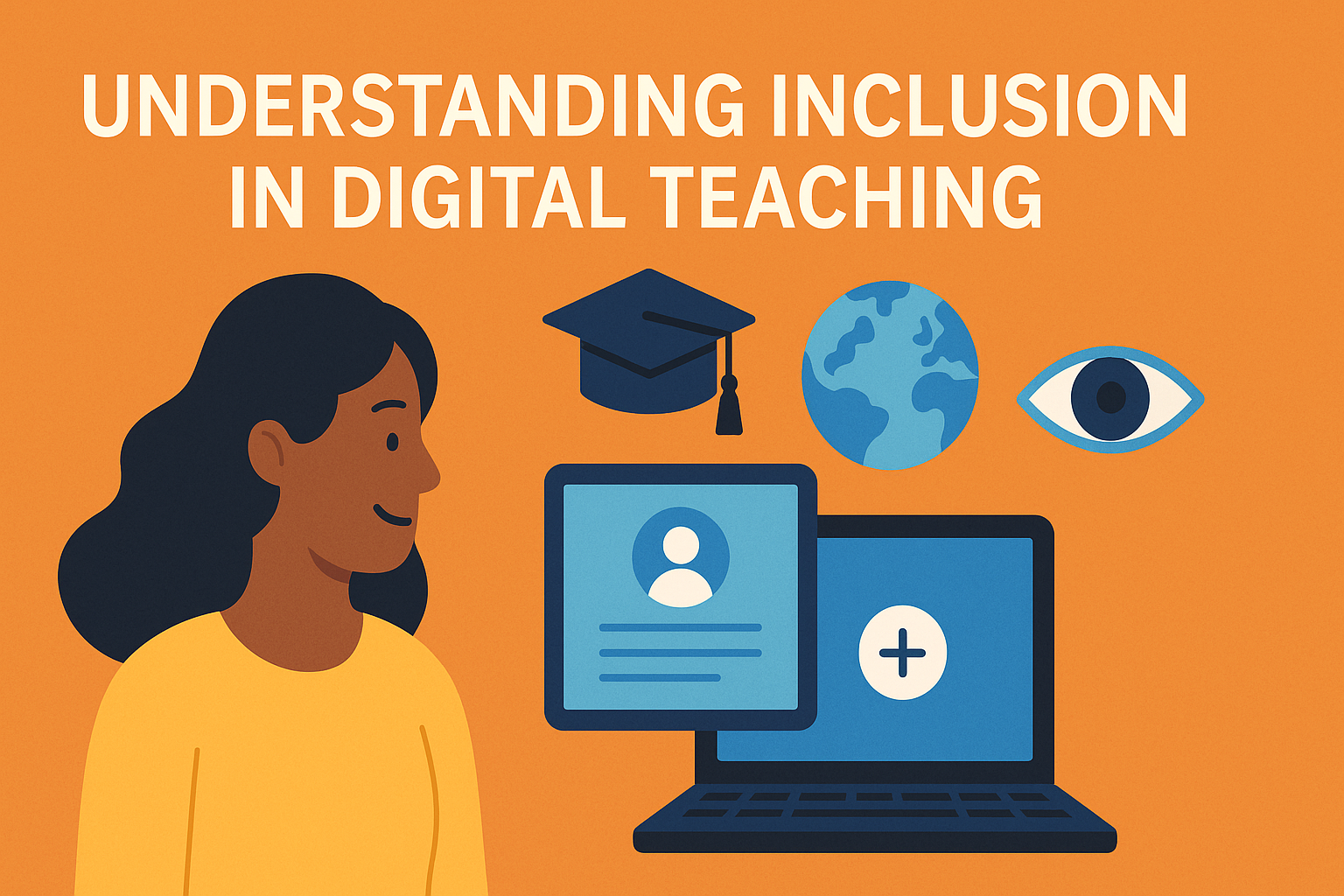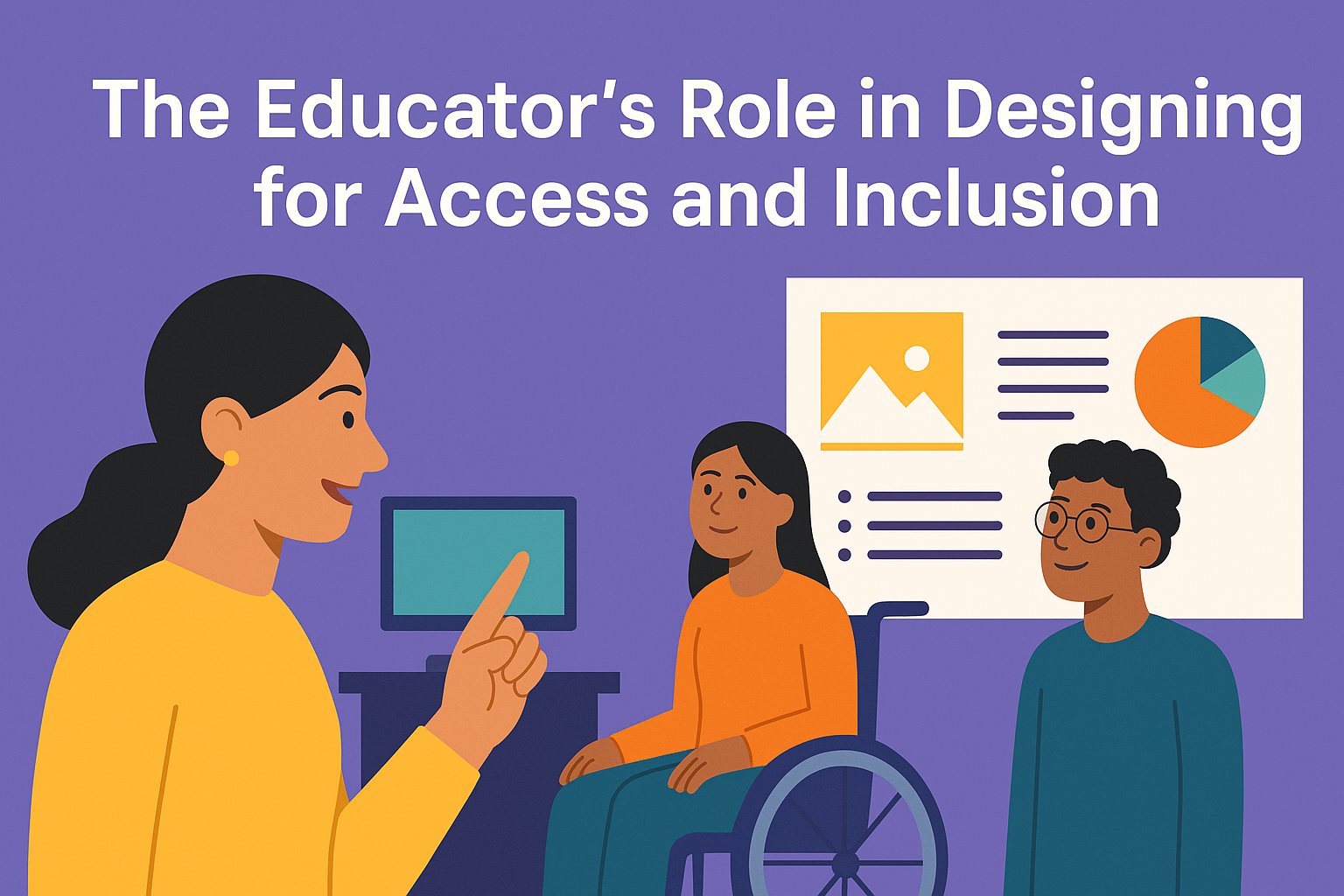
Digital teaching offers powerful opportunities for expanding access to education, but without deliberate attention to inclusion, it can also reinforce or deepen existing inequalities. This unit introduces the foundational concepts of inclusion and accessibility in higher education, with a specific focus on digital learning environments. By understanding the barriers students may face, and the role educators play in proactively addressing them, we can begin designing more equitable learning experiences from the start.
Throughout this unit, you will be invited to reflect on your own teaching practices and identify small, intentional actions (self-nudges) that promote accessibility and foster participation for all learners.
In the context of digital teaching, inclusive pedagogy and accessibility go hand in hand. A digitally inclusive educator anticipates diversity, designs content that works for everyone, not just the majority, and removes unnecessary obstacles to learning.
Digital learning environments can unintentionally exclude students when their diversity of needs is not considered. Below are some common barriers to inclusion in online and hybrid higher education settings:
Being aware of these potential barriers is a first step. The next is to act on that awareness by designing with inclusion in mind.

Inclusive digital pedagogy is not about having all the answers. It is about shifting from reactive to proactive design, embedding accessibility as a default, not an add-on.
Educators play a central role in this shift. You don’t need to become an accessibility expert overnight, but you can take intentional steps to reduce exclusion in your own materials and interactions. For example:
When inclusion is designed in from the beginning, fewer accommodations are needed later. This benefits everyone, not just students with identified needs.
Adopting inclusive practices can feel overwhelming, especially if you are juggling multiple responsibilities or unsure where to begin. This is where self-nudging becomes useful.
Self-nudging involves creating small prompts, reminders, or environmental cues that make it easier to follow through on your intentions. In the context of inclusive pedagogy, this might mean:
These nudges don’t require you to change everything at once. They simply help you build inclusive habits gradually, starting with your awareness and growing into your routine.
Check out the following video where students explain about digital accessibility and what it means to them.
Before moving on to Unit 2, take time to reflect on your current teaching materials and how they support (or limit) accessibility and inclusion. The activity below will help you begin identifying areas where small, intentional changes can make a meaningful difference.
Objective:
To identify potential exclusion points in your own digital teaching materials.
Instructions:
Example:
You will return to these nudges later in the module as you begin applying inclusive design strategies.